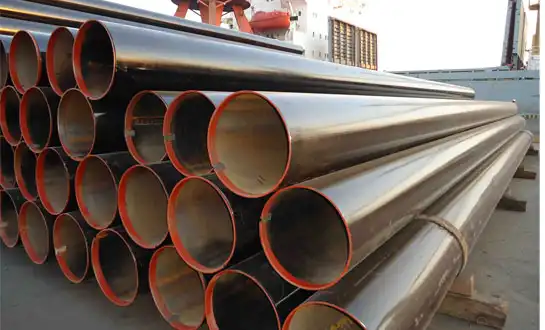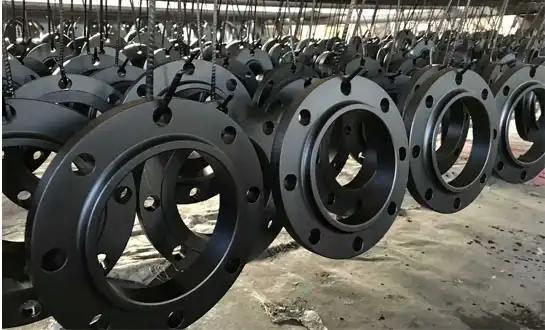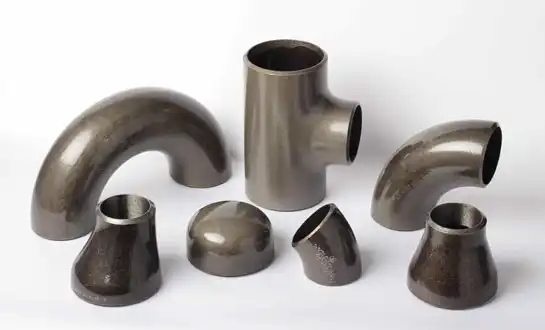Helium Leak Test for Steel Pipe Fittings: When and Why to Use It
Helium leak testing is the most sensitive and dependable way to find tiny leaks in steel pipe fittings used in important situations when complete integrity is a must. This non-destructive testing method uses helium gas as a tracer since it has tiny molecules, is innocuous, and is easy to find using mass spectrometry. Steel pipe fittings in industries such as aerospace, nuclear power, pharmaceutical manufacturing, and semiconductor production require leak detection capabilities measuring down to 10⁻¹² mbar·L/s. Unlike traditional hydrostatic or pneumatic pressure tests that identify only gross leaks, helium leak testing reveals defects invisible to other methods, including microscopic porosity, hairline cracks, and weld imperfections. When and why helium leak testing is better than other methods is important for engineers to know in order to make sure systems work well, avoid costly breakdowns, and follow strict government rules.
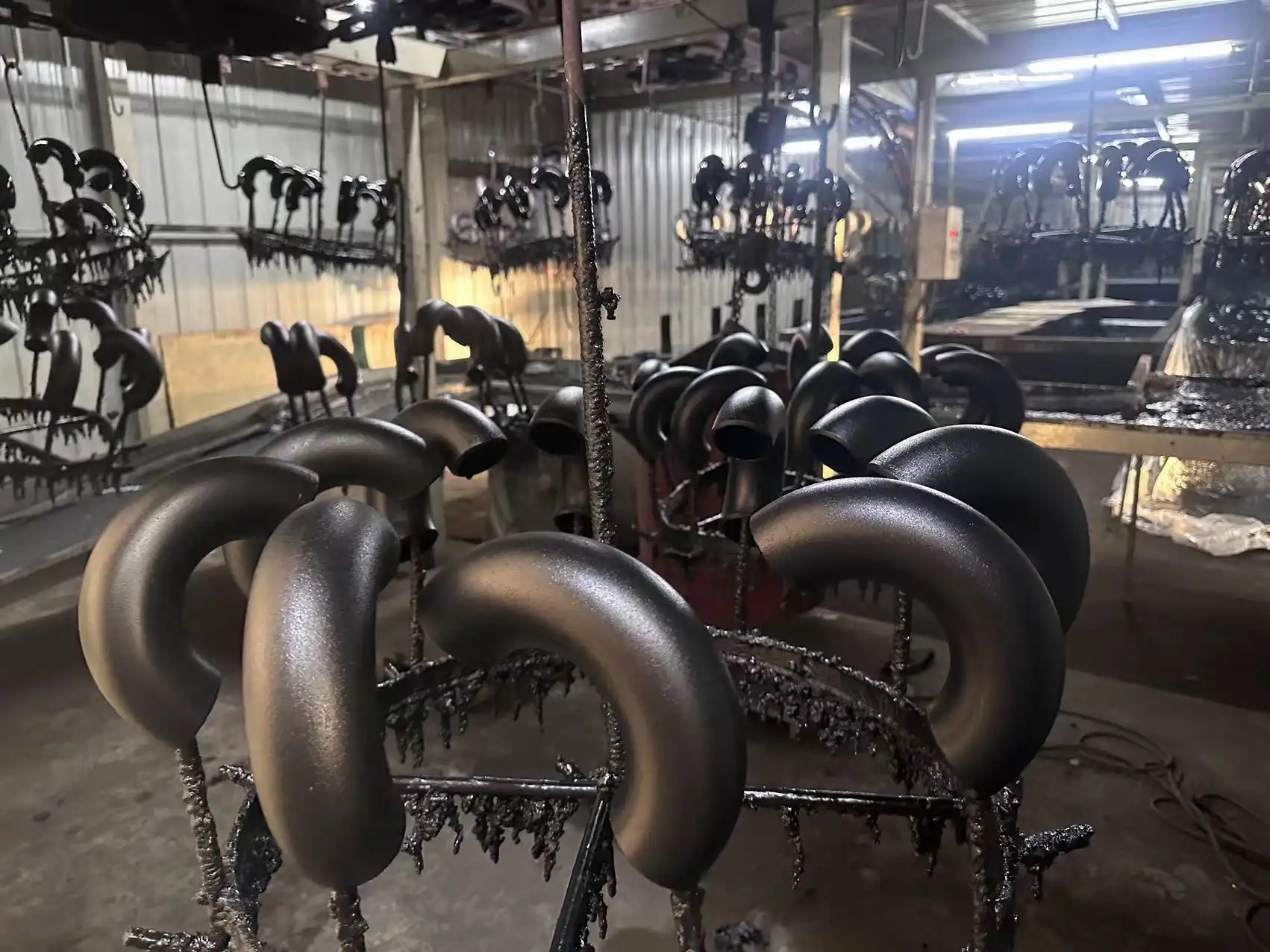
Understanding Helium Leak Testing Fundamentals for Steel Pipe Fittings
The Science Behind Helium as an Ideal Tracer Gas
Helium is the best tracer gas for finding leaks in steel pipe fittings in important applications because it has special physical and chemical characteristics. With an atomic radius of only 31 picometers, helium molecules are smaller than virtually all other gases except hydrogen, enabling them to penetrate through the tiniest defects that larger molecules cannot traverse. This trait is very important for evaluating steel pipe fittings since tiny porosity, grain boundary separations, or fractures on the nanoscale scale might make the system less stable. Because helium is chemically inert, it doesn't react with steel surfaces, coatings, or process media. This means that there is no worry about corrosion or contamination during testing. The gas is safe to handle without any particular precautions since it is not poisonous, flammable, or harmful to the environment. Helium constitutes only 5.2 parts per million of atmospheric air, providing exceptionally low background levels that enhance detection sensitivity. Modern helium leak detectors can identify concentration changes as small as one part per billion, translating to leak rate measurements down to 10⁻¹³ mbar·L/s for steel pipe fittings in ultra-high vacuum applications. These combined features make helium leak testing the best way to check steel pipe fittings when failure is not an option.
Helium Leak Detection Equipment and Methodology
Helium leak testing for steel pipe fittings employs sophisticated mass spectrometer-based detectors that selectively identify helium molecules while filtering out other atmospheric gases. The mass spectrometer ionizes gas samples entering the detector, separating ions by their mass-to-charge ratio using magnetic or quadrupole fields that direct only helium ions to the collection electrode. Testing methodologies for steel pipe fittings generally follow either vacuum or sniffer probe approaches depending on component configuration. Vacuum method testing evacuates the component, applies helium externally, and monitors for helium entering the evacuated space through any leak paths. This method is very sensitive and can find leak rates as low as 10⁻¹⁰ mbar·L/s. Because of this, it works well for important steel pipe joints in the aircraft and electronics businesses. The sniffer probe technique uses helium to pressurize parts from the inside while a probe samples the outside surface. It looks for places where the amount of helium is higher than usual to find leaks. This method works well for bigger steel pipe fittings or installed assemblies when vacuum containment isn't possible. Proper calibration using reference leaks with known leak rates ensures measurement accuracy and traceability to national standards.
Interpreting Leak Rates and Acceptance Criteria
Understanding how to quantify leak rates and setting the right acceptance standards are very important parts of helium leak testing for steel pipe fittings used in many different ways. Leak rates are expressed in pressure-volume units per time, typically mbar·L/s, quantifying the amount of gas passing through a leak path. Acceptable leak rates for steel pipe fittings vary dramatically across industries, ranging from 10⁻⁴ mbar·L/s for general industrial vacuum systems to 10⁻¹⁰ mbar·L/s for spacecraft components. Conversion factors account for molecular weight differences, with helium's low molecular weight meaning measured helium leak rates typically exceed rates for heavier process gases by factors of 2.6 to 3.7. Steel pipe fittings in ultra-high vacuum systems demand the most stringent specifications. Documentation requirements mandate recording leak test results, equipment calibration data, operator qualifications, and environmental conditions, providing traceability throughout component lifecycles.
Critical Applications Requiring Helium Leak Testing
Aerospace and Aviation Industry Requirements
The aerospace industry imposes the most demanding leak testing requirements on steel pipe fittings due to catastrophic consequences of in-flight failures. Aircraft hydraulic systems operating at pressures exceeding 5,000 psi require steel pipe fittings with absolute leak integrity to prevent fluid loss that could compromise flight control systems. Helium leak testing finds tiny flaws that might become worse when pressure and vibration are applied in cycles. Fuel system components demand equally rigorous testing, as even minor leaks create fire hazards. Commercial aviation regulations mandate helium leak testing for critical steel pipe fittings in environmental control systems that maintain cabin pressurization, where leak rates below 10⁻⁶ mbar·L/s ensure passenger safety. Spacecraft applications establish even more stringent requirements, with steel pipe fittings in life support systems and propulsion feed lines tested to 10⁻⁹ mbar·L/s or better. The vacuum of space provides no second chances, making pre-launch helium leak testing the final defense against mission-threatening failures.
Nuclear Power and High-Consequence Industrial Systems
Nuclear power facilities mandate helium leak testing for steel pipe fittings in primary coolant loops, containment penetrations, and radioactive waste handling systems where leaks pose environmental and safety hazards. Primary coolant systems operate under extreme conditions while containing radioactive materials, making leak prevention absolutely critical. Steel pipe fittings in these systems undergo helium leak testing to 10⁻⁷ mbar·L/s or better, ensuring integrity against both coolant loss and radioactive material release. The extra expense of helium leak testing is worth it since undiscovered leaks may lead to regulatory infractions, health concerns for the public, and even deadly accidents. Chemical processing facilities handling toxic, flammable, or explosive materials increasingly specify helium leak testing for critical steel pipe fittings where leaks could trigger fires or explosions. Semiconductor manufacturing clean rooms maintain controlled atmospheres where even minute leaks can ruin product yields worth millions of dollars.
Pharmaceutical and Medical Device Manufacturing
Pharmaceutical manufacturing and medical device production increasingly rely on helium leak testing for steel pipe fittings in systems where product purity, sterility, and patient safety depend on absolute containment integrity. Bioreactor systems and sterile filtration assemblies utilize stainless steel pipe fittings that must maintain sterile barriers against microbial contamination. Helium leak testing validates that welds and connections meet integrity standards that visual inspection and pressure testing cannot verify. Medical gas distribution systems in hospitals supply oxygen and medical air through networks of steel pipe fittings where leaks risk patient safety. Leak testing papers is becoming more and more required by laws, and helium testing is the only way to be sure that all the rules have been followed. The economic impact of contaminated pharmaceutical batches or compromised medical devices far exceeds helium leak testing costs.
Implementing Effective Helium Leak Testing Programs
Developing Test Procedures and Standards
To create thorough helium leak testing procedures for steel pipe fittings, you need to systematically come up with techniques, acceptance criteria, and documentation standards that meet the needs of the application. Test procedure development begins with analyzing failure modes to determine appropriate leak rate limits for specific steel pipe fittings. Written procedures must specify equipment requirements, calibration frequencies, test configurations, and acceptance criteria. Acceptance standards should reference relevant industry codes such as ASME BPVC Section V or ISO 20485. Steel pipe fittings serving different functions may require varying acceptance criteria based on criticality analysis. Documentation requirements must capture all relevant test parameters including equipment identification, calibration status, measured leak rates, and inspector qualifications.
Training Personnel and Quality Control
Successful helium leak testing programs depend on properly trained personnel who understand both testing principles and practical techniques. Operator training should cover helium properties, leak detection theory, equipment operation, and documentation requirements. Certification programs following SNT-TC-1A or ISO 9712 guidelines establish minimum qualification requirements. Equipment maintenance programs ensure helium leak detectors maintain calibration accuracy through scheduled servicing. Calibrated reference leaks with traceability to national standards provide the foundation for measurement accuracy. Quality control checks including calibration verifications should occur before each testing session to confirm equipment operates within specifications for steel pipe fittings testing.
Cost-Benefit Analysis and Method Comparison
Evaluating helium leak testing implementation for steel pipe fittings requires comprehensive cost-benefit analysis comparing testing expenses against failure consequences. Equipment costs range from portable sniffers to sophisticated vacuum systems. Alternative leak detection methods including bubble testing and pressure decay offer lower costs but sacrifice sensitivity. Bubble testing detects only relatively large leaks above 10⁻⁴ mbar·L/s, proving inadequate for critical steel pipe fittings. Pressure decay testing cannot locate specific leak sites or detect leaks below 10⁻⁵ mbar·L/s. The true value of helium leak testing emerges when considering failure costs including system downtime, safety incidents, and regulatory violations that defective steel pipe fittings can cause.
Conclusion
Helium leak testing is the most sensitive way to check steel pipe fittings in important situations when other tests don't work. Knowing when this strategy is needed keeps the system safe and saves expensive breakdowns. At HEBEI RAYOUNG PIPELINE TECHNOLOGY CO., LTD., we manufacture steel pipe fittings meeting stringent quality standards, supported by ISO 9001:2015 certification. Our buttweld elbows, reducers, and flanges serve critical applications worldwide, backed by GOST-R and SGS certifications ensuring reliability.
FAQ
1. What leak rate sensitivity can helium testing achieve for steel pipe fittings?
Helium leak testing detects leak rates as small as 10⁻¹² mbar·L/s using vacuum methods, far exceeding bubble testing capabilities. Typical industrial applications test steel pipe fittings to 10⁻⁶ to 10⁻⁹ mbar·L/s depending on criticality.
2. How does helium leak testing compare economically to pressure testing?
While helium leak testing costs more initially, it prevents expensive failures by detecting microscopic defects that pressure testing misses. For critical steel pipe fittings where failure consequences are severe, helium testing delivers substantial long-term value.
3. Can helium leak testing damage steel pipe fittings during the process?
Helium leak testing is completely non-destructive, causing no damage to steel pipe fittings. The parts are only exposed to harmless helium gas at safe pressures during the process, which makes it perfect for trying them before putting them in place.
4. What industries mandate helium leak testing for steel pipe fittings?
Aerospace, nuclear power, semiconductor manufacturing, and pharmaceutical industries commonly mandate helium leak testing for steel pipe fittings in critical applications where absolute integrity is essential for safety and regulatory compliance.
HEBEI RAYOUNG PIPELINE: Leading Steel Pipe Fittings Manufacturers for Critical Applications
At HEBEI RAYOUNG PIPELINE TECHNOLOGY CO., LTD., we believe that excellent infrastructure starts with dependable materials manufactured to the highest quality standards. As one of the leading pipes and fittings manufacturers and suppliers, we produce steel pipe fittings engineered for applications where integrity and reliability are non-negotiable. We sell many items, such as precisely made buttweld elbows, reducers, tees, and flanges that are great for systems that need to go through a lot of leak tests to make sure they work. With ISO 9001:2015 certification driving our quality management systems, we ensure every steel pipe fitting meets stringent specifications. Whether your application serves aerospace, pharmaceutical manufacturing, nuclear power, or other demanding industries, our carbon steel and stainless steel pipe fittings deliver the performance your projects demand. We serve global markets with GOST-R and SGS certifications validating our commitment to export compliance. Contact us today at info@hb-steel.com to discuss how HEBEI RAYOUNG PIPELINE can support your critical applications with steel pipe fittings manufactured to exceed your most demanding specifications.
References
1. Nondestructive Testing Handbook, Third Edition: Volume 1, Leak Testing. (2016). American Society for Nondestructive Testing, Columbus, Ohio.
2. ASME Boiler and Pressure Vessel Code, Section V: Nondestructive Examination, Article 10 - Leak Testing. (2021). American Society of Mechanical Engineers, New York.
3. Berman, A. (2019). Total Pressure Measurements in Vacuum Technology. Academic Press, Cambridge, Massachusetts, Chapter 8: Leak Detection Methods.
4. ISO 20485:2017 Non-destructive testing - Leak testing - Tracer gas method. International Organization for Standardization, Geneva, Switzerland.
5. Howell, M. and Hammerschmidt, M. (2018). Leak Detection Handbook for Industrial Applications. Industrial Press, South Norwalk, Connecticut.
6. Jousten, K. (ed.). (2016). Handbook of Vacuum Technology, Second Edition. Wiley-VCH, Weinheim, Germany, Part 3: Leak Detection and Calibration.

Need a quote? Want to see samples? Just say hello. We’re friendly. We’re fast. And we’re ready when you are.
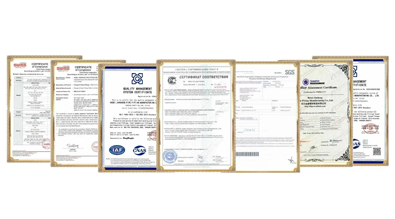
Welcome to RAYOUNG – Strong Pipes, Stronger Promise
